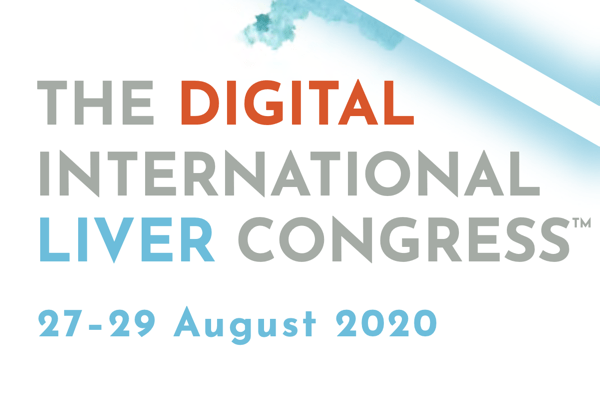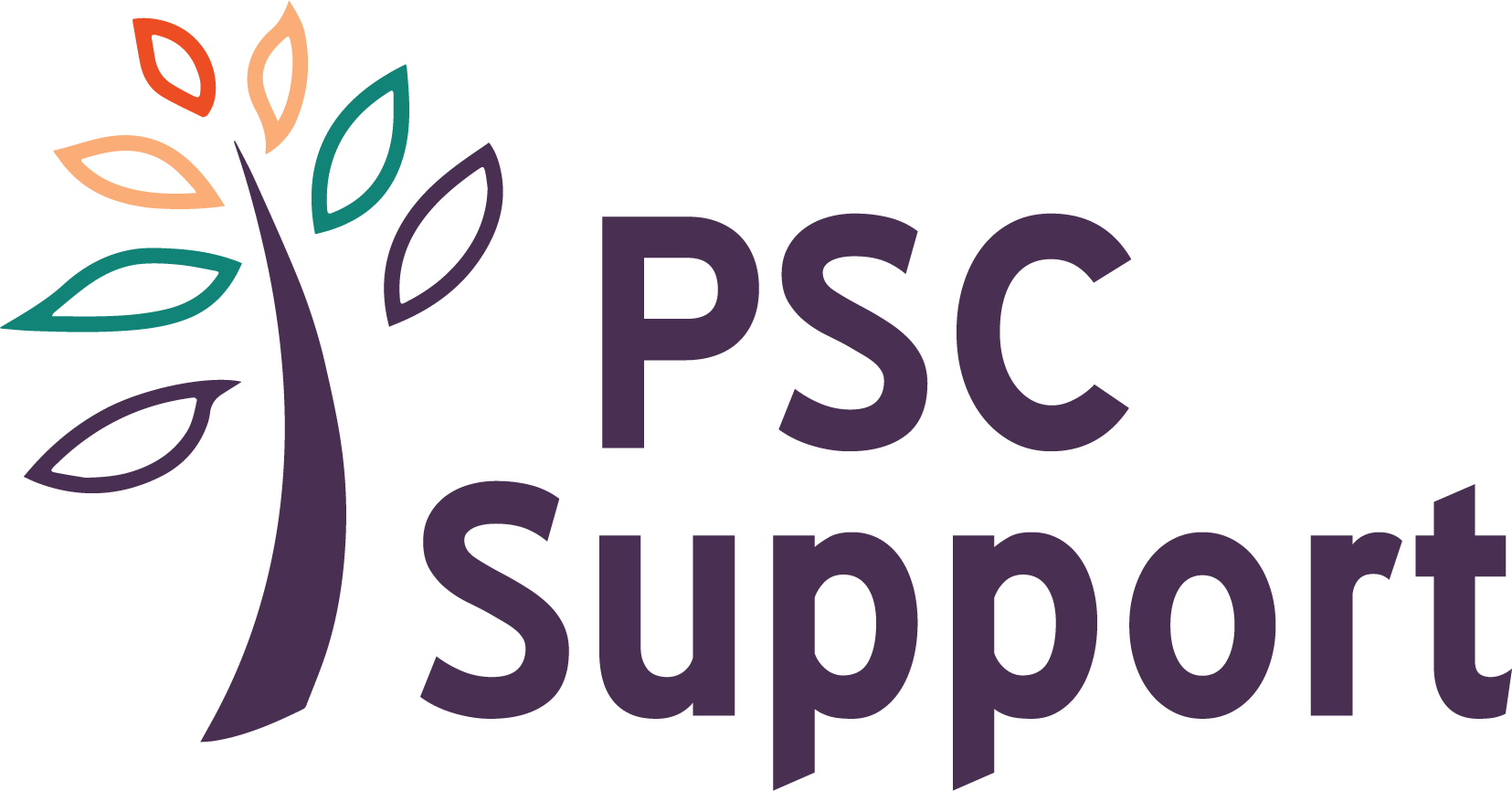
Quick Links for PSC Research
Each year, the EASL ILC brings together thousands of leading scientists, clinicians and researchers from around the world to showcase and discuss ground-breaking liver research. This year, the ILC was held virtually, and Martine Walmsley, PSC Support Chair of Trustees, was invited to present in the opening ceremony. This was a great honour. She called on attendees to be proactive: that high quality research should lead to more high-quality research, and to changes in clinical practice that lead to meaningful changes in patients’ lives.
Because that’s what matters, especially to PSC patients. We want to live longer, and we want to live better. We don’t want to hear about research because it is ‘interesting’; we want to learn about research that moves the field forward towards effective treatments or improvements in quality of life.
For PSC, this means
- understanding the disease processes so that potential drugs can be targeted to interrupt those processes;
- developing biomarkers so that we can better measure and predict disease progression and drug efficacy, confidently diagnose the disease or its variations or reduce cancer risk; and
- actively finding ways to ease symptoms and assess quality of life.
The ILC covers all aspects of liver disease research and healthcare. We highlight here the research most relevant to PSC patients.
Biomarkers
A biomarker, or biological marker is a measurable indicator of some biological state or condition in the body. They can help diagnose conditions, measure progression and even risk of progression of disease.
Imaging biomarkers
Images such as those taken by ultrasound or MRI can give us vital information. Many of us in the UK have taken part in studies using new MRI technology (MRCP and LiverMultiscan, LMS) that:
- produces 3D images of our bile ducts (MRCP+) and ‘slices’ of liver (LMS), and
- makes measurements that include the volume of the bile ducts, individual bile duct diameters, and measures areas where there are strictures (blockages or narrowed areas) (MRCP+).
Scientists are now starting to understand more about what these images and measurements mean for patient care and their value in clinical trials. Researchers presented data showing that MRCP+ tests align with existing, well-established PSC-scores (such as the Modified Amsterdam Score) that predict which patients have a high/low risk of PSC disease progressiona,b. They also showed that the technology could assess some features of the scarring in PSC that can currently only be obtained from liver biopsies, and that it provided non-invasive markers of liver fibrosis, portal hypertension and liver functionc,d.
What we think
We need to understand better how this new MRI technology performs over time before we can make generalisations about its use in clinical trials and clinical care, but we welcome and encourage these efforts to find objective, quantifiable and non-invasive ways to measure and predict disease progression in PSC patients. This would improve our healthcare and boost clinical trial design.
Microbiota
For a long time, patients have expressed a great interest in the gut microbiome and how it might affect PSC. We were particularly interested in a study from Norway that looked at gut microbiota called Klebsiella in PSC patientse. They took samples during colonoscopies and found that Klebsiella in the gut mucosa was associated with more severe PSC. They found other PSC-associated microbiota features like low diversity or increased Veillonella were not related to survival. The authors also suggest future research looks at targeting specific bacteria with a view to modifying the disease in different groups of PSC patients. The idea of modifying gut microbiota to control the disease is appealing to patients.
Antibodies
Data were presented showing that the immune-system proteins (antibodies), anti-GP2 IgA and PR3 ANCA, might help predict who is at risk of more severe PSC and bile duct cancerf.
What we think
While identifying patients who are at higher risk of more severe or complicated disease is important, and could help clinicians prioritise who to monitor more often and more closely and those at lower risk who may require less frequent monitoring, the knowledge causes individual patients and their families severe anxiety given there remain limited interventions that will improve outcomes of those deemed to be at high risk. Again, however this may provide a means of better stratification of patients recruited into clinical trials so that new interventions can be evaluated in those patients at highest risk of adverse outcomes.
There is a critical need to develop a treatment to stop PSC from getting more severe, and to develop early detection and treatment of bile duct cancer, so that high risk-patients do not face the future knowing that they are high-risk while at the same time knowing little can be done to reduce that risk.
Potential Treatments for PSC
We saw some exciting early research findings that might one day lead to treatments.
Genetic therapy
Work is ongoing to translate genetic risk into potential drug targets in PSC by understanding how our genetic makeup influences the way PSC develops in the body.
In 2017, the largest genome wide association study (GWAS) to date identified 15 regions of the genome outside of the HLA associated with the risk of developing PSC. Dr Elizabeth Goode, reported on her work to take this one step further by investigating the biological pathways associated with these 15 regionsg.
Using cutting edge science (‘colocalisation’ and ‘finemapping’), she identified causal variants, genes and cell types affected by the PSC risk loci and identified several potential therapeutic targets. More work is needed but Dr Goode’s work so far is important because that medicines that are based on human genetic evidence of disease association are more than twice as likely to lead to approved drugs. Her work is ongoing.
NorUDCA
Zhu et al (AS060) looked at 24-norursodeoxycholic acid (norUDCA), a treatment which is being tested in a clinical trial at the moment in Europeh. Zhu’s investigations showed that norUDCA affects the immune response in the colon. This suggests that norUDCA might improve colitis (PSC-IBD) as well PSC. We do not know this for sure as these investigations were not done in humans, nor was this study part of the ongoing Phase 3 clinical trial. However, this is promising news.
CM101
Another study looked at a potential PSC treatment by investigating a protein called CC24, which plays an important role in the development of liver inflammation and fibrosisi. Something called CCL24 is found in liver biopsies from bile duct cells and immune cells of PSC patients. The study team blocked CCL24 in animals with a substance called CM101 and found reduced bile duct injury and liver damage. They also found that levels of CCL24 in the blood in PSC patients corresponded with other known markers of fibrosis. CM101 is a new phase 2 clinical trial in the UK.
PLN-74809 and PLN-75068
Data were presented showing that two substances called PLN-74809 and PLN- 75068 can interfere with certain proteins (integrins αVβ6 and αVβ), which are thought to play a role in the development of fibrosis in PSC and PBC j. PLN-74809 and PLN-75068 administered reduced PSC fibrosis in animal and laboratory studies. There is currently a Phase 2a clinical trial underway to test PLN-74809 in America, Canada and Australia, with plans to open in the UK soon.
Cilofexor
The results of a Phase 1 study looking at a potential treatment called cilofexor were presented, showing that this drug was well-tolerated by patients with mild to moderate liver damagek. A Phase 3 study is underway globally, including in the UK.
Many thanks to Dr Roger Chapman and Professor Douglas Thorburn for reviewing our report.
ILC Report from ALBI France
ALBI France, the patient organisation in France for people with autoimmune liver diseases, has also reported on the International Liver Congress. Read report from ALBI France.
References
a Cheng L, Arndtz K, Goldfinger M, Trivedi P, Mavar-Haramija M, Dennis A, Ridgway G, Ferreira C, Borghetto A, Kelly M, Brady JM. Evolving imaging in biliary disease: quantitative magnetic resonance cholangiopancreatography findings correlate with the modified Amsterdam score in patients with primary sclerosing cholangitis. Journal of Hepatology. 2020 Aug 1;73:S781-2 DOI:https://doi.org/10.1016/S0168-8278(20)32009-2
b Are V, Vuppalanchi R, Ren R, Cheng L, Marieiro M, Ferreira C, Mavar-Haramija M, Dennis A, Kelly M, Ridgway G, Banerjee R. Quantitative magnetic resonance cholangiopancreatography imaging in patients with primary sclerosing cholangitis-feasibility and preliminary analysis for prediction of clinical outcomes. Journal of Hepatology. 2020 Aug 1;73:S788. DOI:https://doi.org/10.1016/S0168-8278(20)32024-9
c Selvaraj E, Ridgway G, Culver E, Collier JD, Brady JM, Bailey A, Pavlides M. Combination of quantitative 3D MRCP and multi-parametric MRI demonstrates increased periductal iron-corrected T1 in large-duct primary sclerosing cholangitis. Journal of Hepatology. 2020 Aug 1;73:S86 DOI:https://doi.org/10.1016/S0168-8278(20)30702-9
d Chang PE, Jayaswal A, Cheng L, Tay MF, Gogna A, Tan HK, Too CW, Low A, Tan CK. Multiparametric magnetic resonance imaging of liver and spleen is a reliable non-invasive predictor of clinically relevant hepatic venous pressure gradient thresholds and predicts failure of primary prophylaxis for variceal bleeding. Journal of Hepatology. 2020 Aug 1;73:S780. DOI:https://doi.org/10.1016/S0168-8278(20)32006-7
e Hole MJ, Jørgensen KK, Hansen SH, Götz A, Boberg KM, Karlsen TH, Kummen M, Hov JR. Klebsiella in the mucosal gut microbiota in primary sclerosing cholangitis is associated with more severe disease. Journal of Hepatology. 2020 Aug 1;73:S200. DOI:https://doi.org/10.1016/S0168-8278(20)30906-5
f Wunsch E, Roggenbuck D, Norman GL, Milkiewicz M, Krawczyk M, Aure MA, Bentow C, Mahler M, Lopens S, Milkiewicz P. Antibodies against glycoprotein 2 and anti-neutrophil cytoplasmic antibodies targeting the serine proteinase 3 are markers of severe primary sclerosing cholangitis (PSC) and progression to cholangiocarcinoma (CCA). Journal of Hepatology. 2020 Aug 1;73:S469. DOI:https://doi.org/10.1016/S0168-8278(20)31419-7
g Goode E, Panousis N, Fachal L, Moutsianas L, Bai B, McIntyre R, Raine T, Rushbrook S, Anderson C. Transcriptome and colocalisation analysis of CCR9+ gut-homing T cells and other immune cells identifies important genes and biological pathways potentiating primary sclerosing cholangitis risk. Journal of Hepatology. 2020 Aug 1;73:S42-3. DOI:https://doi.org/10.1016/S0168-8278(20)30636-X
h Zhu C, Boucheron N, Fuchs C, Hainberger D, Stolz V, Rica R, Preglej T, Sandner L, Alteneder M, Gülich A, Hamminger P, Mlitz V. Remetic J, Stojakovic T, Schargl H, Sakaguchi S, Ellmeier W, Trauner M. 124-nor-ursodeoxycholic acid ameliorates intestinal inflammation by counteracting Th17/Treg imbalance via redirecting mTOR metabolic sensing programs in CD4+ T cells. Journal of Hepatology, 2020 Aug 1;73:S44. DOI:https://doi.org/10.1016/S0168-8278(20)30639-5
i Barashi N, Segal M, Aharon A, Katav A, Mor A, Mishalian I, Olam D, Peled A, Saffioti F, Thorburn D. CCL24 modulates fibrosis development in primary sclerosing cholangitis: correlation of human serum CCL24 levels with fibrosis markers and data from the Mdr2–/–mouse model. Journal of Hepatology. 2020 Aug 1;73:S486. DOI:https://doi.org/10.1016/S0168-8278(20)31452-5
j Schaub J, Chen C, Decaris M, Ho S, Lee G, Rao V, Marlow M, Martin S, Chen T, Wu J, Dooka C, Cha J, Munoz M, Leftheris K, Gorina E, Lefebvre E, Turner S. PLN-74809, a clinical-stage, dual alphaVbeta6/alphaVbeta1 integrin inhibitor, reduces fibrosis in a preclinical model of biliary fibrosis and precision-cut liver slices from primary sclerosing cholangitis and primary biliary cholangitis patients. Journal of Hepatology. 2020 Aug 1;73:S97-8. DOI:https://doi.org/10.1016/S0168-8278(20)30725-X
k Hsueh C-H, Billin A, Li S, Lin S, Xiao D, Chung C, Myers R, Weber E, Nelson C. The pharmacokinetics, pharmacodynamics, and short-term safety of cilofexor, a nonsteroidal farnesoid X receptor agonist, in subjects with hepatic impairment. Journal of Hepatology. 2020 Aug 1;73:S444-5. DOI:https://doi.org/10.1016/S0168-8278(20)31371-4
